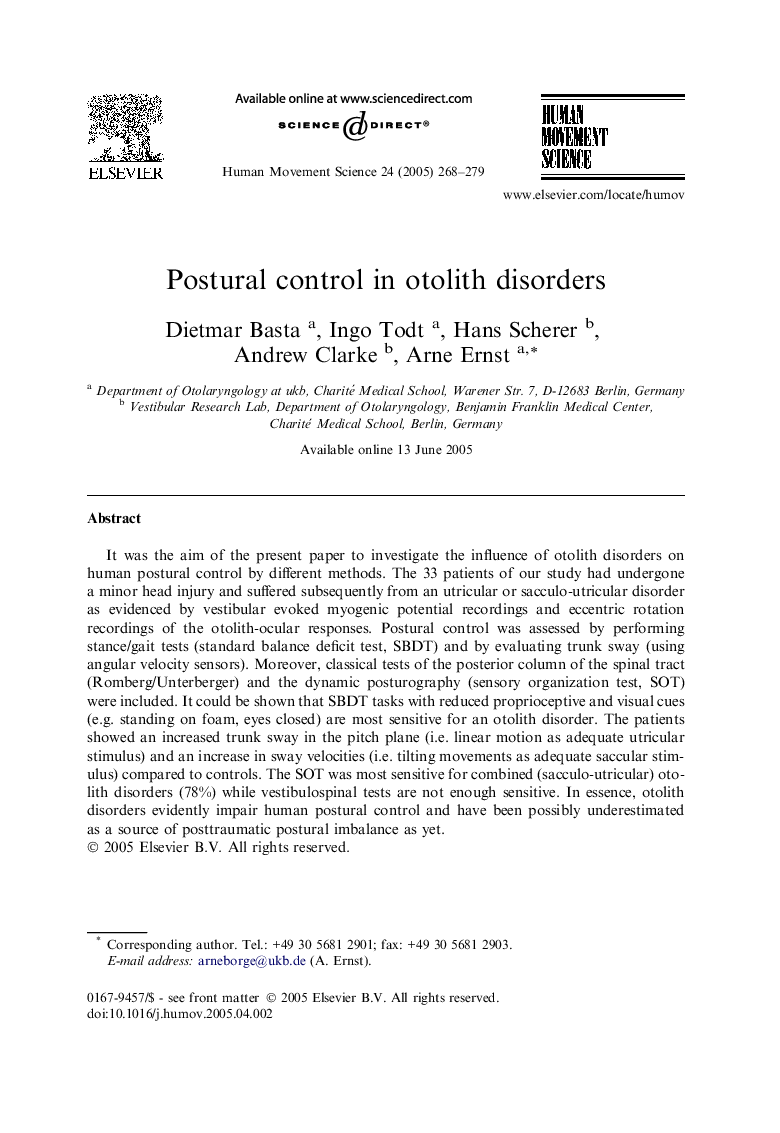| Article ID | Journal | Published Year | Pages | File Type |
|---|---|---|---|---|
| 10459267 | Human Movement Science | 2005 | 12 Pages |
Abstract
It was the aim of the present paper to investigate the influence of otolith disorders on human postural control by different methods. The 33 patients of our study had undergone a minor head injury and suffered subsequently from an utricular or sacculo-utricular disorder as evidenced by vestibular evoked myogenic potential recordings and eccentric rotation recordings of the otolith-ocular responses. Postural control was assessed by performing stance/gait tests (standard balance deficit test, SBDT) and by evaluating trunk sway (using angular velocity sensors). Moreover, classical tests of the posterior column of the spinal tract (Romberg/Unterberger) and the dynamic posturography (sensory organization test, SOT) were included. It could be shown that SBDT tasks with reduced proprioceptive and visual cues (e.g. standing on foam, eyes closed) are most sensitive for an otolith disorder. The patients showed an increased trunk sway in the pitch plane (i.e. linear motion as adequate utricular stimulus) and an increase in sway velocities (i.e. tilting movements as adequate saccular stimulus) compared to controls. The SOT was most sensitive for combined (sacculo-utricular) otolith disorders (78%) while vestibulospinal tests are not enough sensitive. In essence, otolith disorders evidently impair human postural control and have been possibly underestimated as a source of posttraumatic postural imbalance as yet.
Related Topics
Life Sciences
Neuroscience
Cognitive Neuroscience
Authors
Dietmar Basta, Ingo Todt, Hans Scherer, Andrew Clarke, Arne Ernst,
